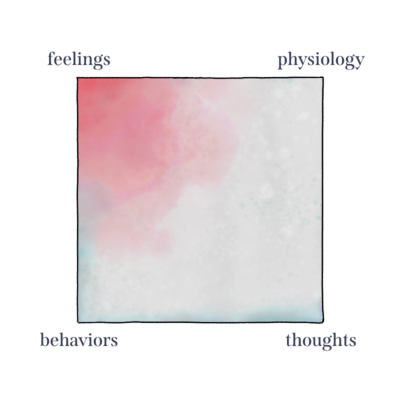





Coping Tools Copy
Session 2 begins with the therapist explaining the concept of coping tools and why practicing them is important.
The goal is for children to understand that coping tools help regulate trauma responses by addressing one or more corners of the CCT Square: emotions, thoughts, physiological sensations, and behaviors. If we change one corner, the other corners will change too, creating a new square that represents a new, more adaptive response to a trauma reminder.

The methods used to teach the coping tools in this module and in the CCT manual are suggestions only. Therapists are encouraged to be creative and develop their own style of teaching them.
In order to maximize their efficacy, children need to practice coping tools regularly, in and out of the sessions. Practice should occur daily regardless of whether or not they are feeling stressed. This helps coping tools become part of ‘muscle memory’ so that they are better utilized the next time the child is in distress.
